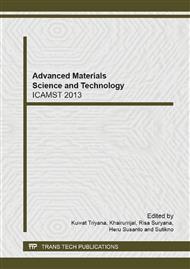p.20
p.24
p.29
p.33
p.37
p.41
p.45
p.49
p.54
Carbon Dioxide Permeation Characteristics in Asymmetric Polysulfone Hollow Fiber Membrane: Effect of Constant Heating and Progressive Heating
Abstract:
This paper reports the effect of constant heating and progressive on carbon dioxide permeation characteristics in asymmetric hollow fiber polysulfone membranes. Glassy polymers are easily plasticized with the presence of plasticizing agents such as carbon dioxide. Constant heating were applied to the membranes to suppress CO2 induced plasticization. Membranes treated with constant temperature heating exhibits lower pressure-normalize flux for both carbon dioxide and methane compared to untreated membranes. This was probably due to densification of membrane skin layer during heating process. Denser skin layer increases the resistance in the membrane which resulted in decreased of pressure-normalize flux. A higher density of membrane skin layer was achieved by progressive temperature heat treatment. This further increased the resistance in the membrane resulted in a lower value of pressure normalized-flux. With the application of different feed pressure, an almost linear value of CO2 pressure-normalize flux shows that plasticization is successfully suppressed by heat treatment. From the results provided in this study, it can be concluded that plasticization of polysulfone hollow fiber membrane is successfully suppressed by heat treatment process.
Info:
Periodical:
Pages:
37-40
Citation:
Online since:
February 2014
Price:
Сopyright:
© 2014 Trans Tech Publications Ltd. All Rights Reserved
Share:
Citation:


